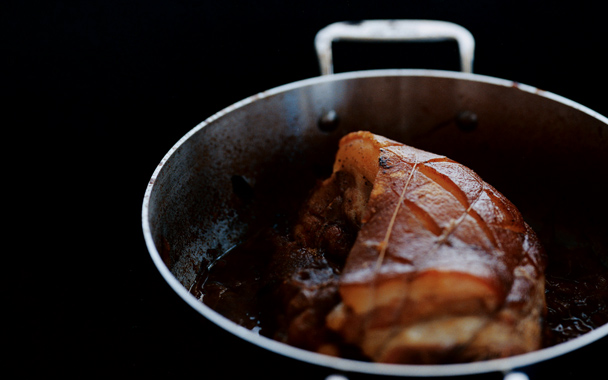Summertime cooking is all about quick food—a salad of pristine greens; vegetables of the moment given a quick blanching or light sauté; a steak or chop tossed in a pan or on the grill, all of it eaten with light still in the sky. Improvisation comes harder in winter and mostly seems to revolve around food that’s been cooked twice.
Braising and stewing are two “combination methods” in which food is first browned in a little fat and then cooked in some flavorful liquid. You brown meat in a pot, remove it, brown some vegetables (often mirepoix, a combination of two parts onion to one part each carrots and celery), then return the meat to the pot, cover it partway (for a braise) or completely (for a stew) with water, stock, or wine, add herbs and other seasonings, and cook it long and slow (several hours at least) until the meat is helplessly tender. Combination methods are profoundly adaptable: Start with pork shoulder you’ve marinated in achiote, garlic, sour orange juice, and oregano, and you’ll end up with excellent filling for tacos; cook beef in red wine with bay and juniper for a Provençal daube. (Fish and vegetables can be braised, too, but the browning is usually more restrained.) The vegetables with which the meat is cooked can be served alongside for a homey meal, or they can be strained out, the sauce reduced or enriched, and even more vegetables added for a refined dish.
Combination methods are the best use of the tough cuts of meat (shoulders, shins, haunches, etc.) that make up most of an animal. Those cuts are tough because the animal uses them a lot—tenderloins are tender because cows and pigs don’t walk around upright—but the low temperatures, long cooking time, and moist environment conspire to break down the tough collagens into silky-smooth gelatins. Lucky for the cook that those are frequently the least expensive bits, the ones the farmers are happiest to sell, and the most flavorful.
Some notes on technique: First, be thorough when browning the meat and vegetables. Carefully caramelizing each surface will lead to richer, deeper flavor. (Think of Raymond Sokolov’s line from The Saucier’s Apprentice: “Each piece of meat has six sides. All are equally important.”) Second, plan to make your dish ahead. It gets better when it sits, and you won’t be tempted to cheat and cook it for only two hours—shoot for four, but persist until you’re not even tempted to use a knife. Finally, cook these dishes in the oven if you can. Boiling the meat hard causes it to toughen, and a covered pot set in a 225°F oven can maintain the perfect just-below-simmering temperature while it fills your house with the scent of tomorrow night’s dinner.


